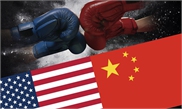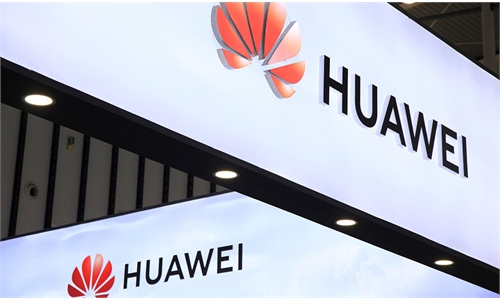COMMENTS / EXPERT ASSESSMENT
China’s economic fundamentals are better shaped than US’

File photo
For more than two years, the US trade war has failed to meet almost all of its set goals. The US trade deficit with China has risen, and the manufacturing industry has not returned to the US.The reckless trade war didn't stop China's export growth from exceeding expectations, nor did it hold China's economy back. The US economy, in contrast, has suffered significantly from Trump's ill decisions and countless US businesses and consumers have borne unnecessary costs.
Actually, a trade war, which runs against historical trends and market principles, is doomed to fail. If we take a closer look at the economic structure of China and US economy and the trade connection between them, it's easy to see the US economy's hollowness.
The US economy has suffered a hollowing-out effect. As the manufacturing industry moved out the US amid globalization to seek low-cost labor and a larger market, the proportion of manufacturing industry in the US has dropped to about 11 percent. In the face of the COVID-19 outbreak, the US once had to rely on imports from China for basic medical supplies including masks and ventilators.
The US economy has also been highly virtualized. The financial industry has become the industry with the highest share of US GDP. As financial capital plays a dominant role in the economy, the stock market has seen a round of irrational elevation in 2020 even when the US economy had plunged by more than 3.5 percent.
As a consumer society, the US economy largely relies on the dominance of the US dollar within the global economic system. Each time faced with an internal crisis, the US all turns to quantitative easing, passing its own crisis onto the rest of world. Since the outbreak of the COVID-19 pandemic, the US has rolled out several rounds of stimulus, pushing the world into a "helicopter money" era, but the source of US' generous subsidies are all from the Federal Reserve (Fed) money printing machine.
On the other hand, the US government is severely indebted, meaning debt sustainability has become a question. The US economy is a giant supported by national debts. The US federal government, which has recorded consecutive deficits for many years, is now burdened with a $27-trillion debt, a debt-to-GDP ratio of nearly 140 percent. Currently, the Biden administration is actively pushing the $1.9 trillion COVID-19 relief plan. The skyrocketing debt is still climbing.
In the case of the Chinese economy, it's supported by strong industries. China is a production-oriented economy and the largest manufacturing economy in the world. With the manufacturing scale of the combined size of the US, Germany and Japan, China produces about 30 percent of the world's industrial products. China has the most complete industrial system in the world, forming an unparalleled competitive advantage.
The solidness of Chinese economy is reflected in solid economic fundamentals and resilience. Against the backdrop of raging pandemic and global economic contraction, China has been the only economy to achieve positive growth, making about one-third contribution to world economy over an extended period. The number of Fortune 500 companies in China has surpassed that of the US, and a number of Chinese multinational companies are at the mid-to-high end of the global industrial chain.
China's unparalleled market size is another strategic advantage. China has overtaken the US as the largest market in the world. More than 128 countries' trade with China has surpassed their trade with the US. Meanwhile, US investments have reaped significant profits from Chinese market. In short, the China market is critical to US companies' global success.
The huge market gives ample room to China's "internal circulation," building up great strength to conduct international cooperation. The conclusion of the talks of the China-EU Comprehensive Agreement on Investment (CAI) and the signature of the Regional Comprehensive Economic Partnership (RCEP) further strengthened China's position in global trade. The US can hardly isolate China, and losing China market is tantamount to losing the future.
Although the US, relying on its advantage in innovation, is attempting to undermine China's technology development, however technology progress can't be blocked through political will alone, the crackdown will inevitably be met with a backlash in the long run. The cutthroat competition will push China to become a stronger competitor for the US.
We certainly hope that China and the US can form a relationship built on partnership rather than confrontation, but we are not afraid of US economic containment and suppression. Only if China maintains strategic focus to push quality development, China can overcome any challenges it will face in the future. China takes great confidence in its solid economic foundations, which become even more valuable in comparison to US hollowness.
The author is Senior Executive Vice President of Bank of China Johannesburg Branch. bizopinion@globaltimes.com.cn



